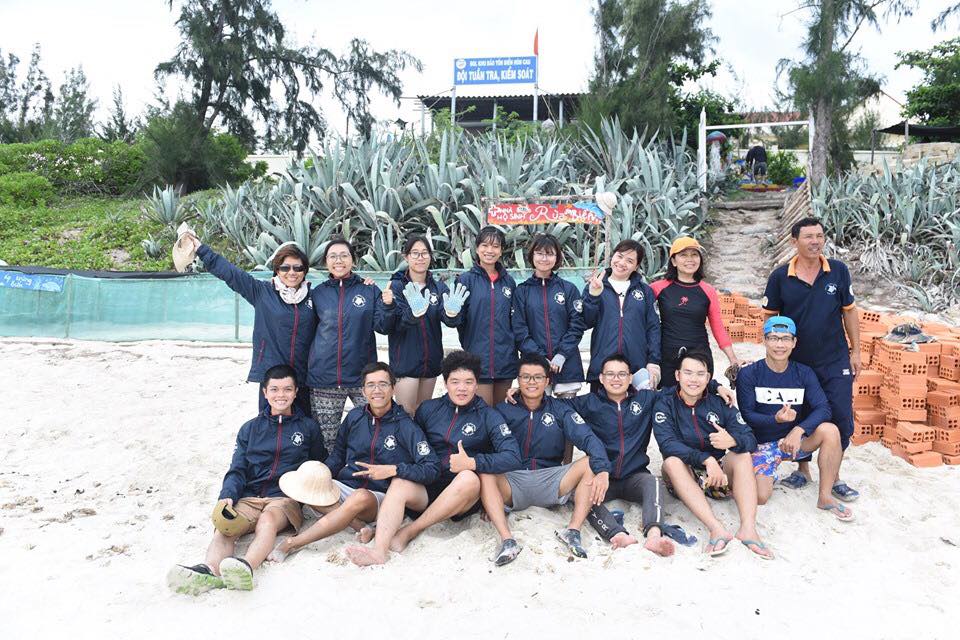A species list isn’t enough for protected area management
Ha Long Bay (HLB) and Cat Ba Archipelago (CBA) are world famous for their karst seascapes that display outstanding aesthetic and geographical features and possess rich biodiversity. According to the HLB Management Board, scientists have so far identified 17 species endemic to these sites. There is photographic evidence for 16 species while neither a photo nor a specimen is available for one.
That reflects the fact that a species list is just the start of conservation. Photos, specimens, distribution maps, population size, and much more are needed to effectively manage protected areas. That’s why a robust monitoring program is crucial, says Dr. Luu Hong Truong, lead trainer in a series of training courses that IUCN organized in November 2018 on terrestrial biodiversity monitoring for staff of the HLB Management Board and Cat Ba National Park. This activity is part of the USAID Ha Long-Cat Ba Alliance.
Dr. Truong and three other experienced conservationists, Dang Minh Tri (Southern Institute of Ecology), Dr. Le Khac Quyet (IUCN SSC Primate Specialist Group), and Dr. Nguyen Thien Tao (Vietnam National Museum of Nature) trained 28 staff on how to monitor eight priority species: Cat Ba langur (Trachypithecus poliocephalus), Rhesus macaque (Macaca mulatta), Cat Ba tiger gecko (Goniurosaurus catbaensis), Ha Long palm tree (Livistona halongensis), Ha Long cycad (Cycas tropophylla), a species of conifer (Nageia fleuryi), a species of coralberry (Ardisia silvestris), and a small terrestrial orchid (Paphiopedilum concolor). These species emerged as leading candidates based on threat level, endemism, commercial value, and other criteria.
The monitoring program considered the limited human and financial resources and accessibility issues in the karst mountains. Trainers taught simple but reliable methods to monitor trends in species population size, identify changes, calculate plant regeneration capacity, and other useful information for management.
“This hands-on training enables me to better understand methods to use permanent sample plots to monitor orchids, count and observe changes in the rhesus macaque population. When I do my own job at the management board, I have many technical questions but did not know who to ask. Thanks to the trainers, I found the answers now and hopefully IUCN and the trainers will continue to mentor us to implement this biodiversity monitoring program”, said Ms. Do Minh Hien, officer of HLB Management Board.
Vu Hong Van from Cat Ba National Park observed, “Many researchers and projects have come to Cat Ba National Park to do their own research, but very little technical work has been done by our own staff and we have very little data in hand. We really appreciate for IUCN and consultants’ efforts to build our staff capacity and design a suitable methodology with our conditions. We still lack equipment and resources to do the work properly and hopefully together with IUCN we can call for more attention from the city’s leaders on the importance of biodiversity monitoring and mobilize funding to do it.”
At the end of the training, Deputy Director of the HLB Management Board, Ms. Nguyen Huyen Anh, stated the management board’s intent to integrate biodiversity monitoring into their management plan and produce an annual workplan to allocate the necessary resources.
Following the biodiversity monitoring training, the trainers held an introductory course on biodiversity database management using BRAHMS, which is a software developed by Oxford University to manage museum specimens that is compatible with global biodiversity information systems. Though an English language platform creates difficulties for some users, the training gave participants a solid introduction to the software and knowledge to build their own database.
IUCN, through the Ha Long-Cat Ba Alliance, will continue to support conservation in HLB and CBA while calling for private sector engagement to sustain these efforts.






